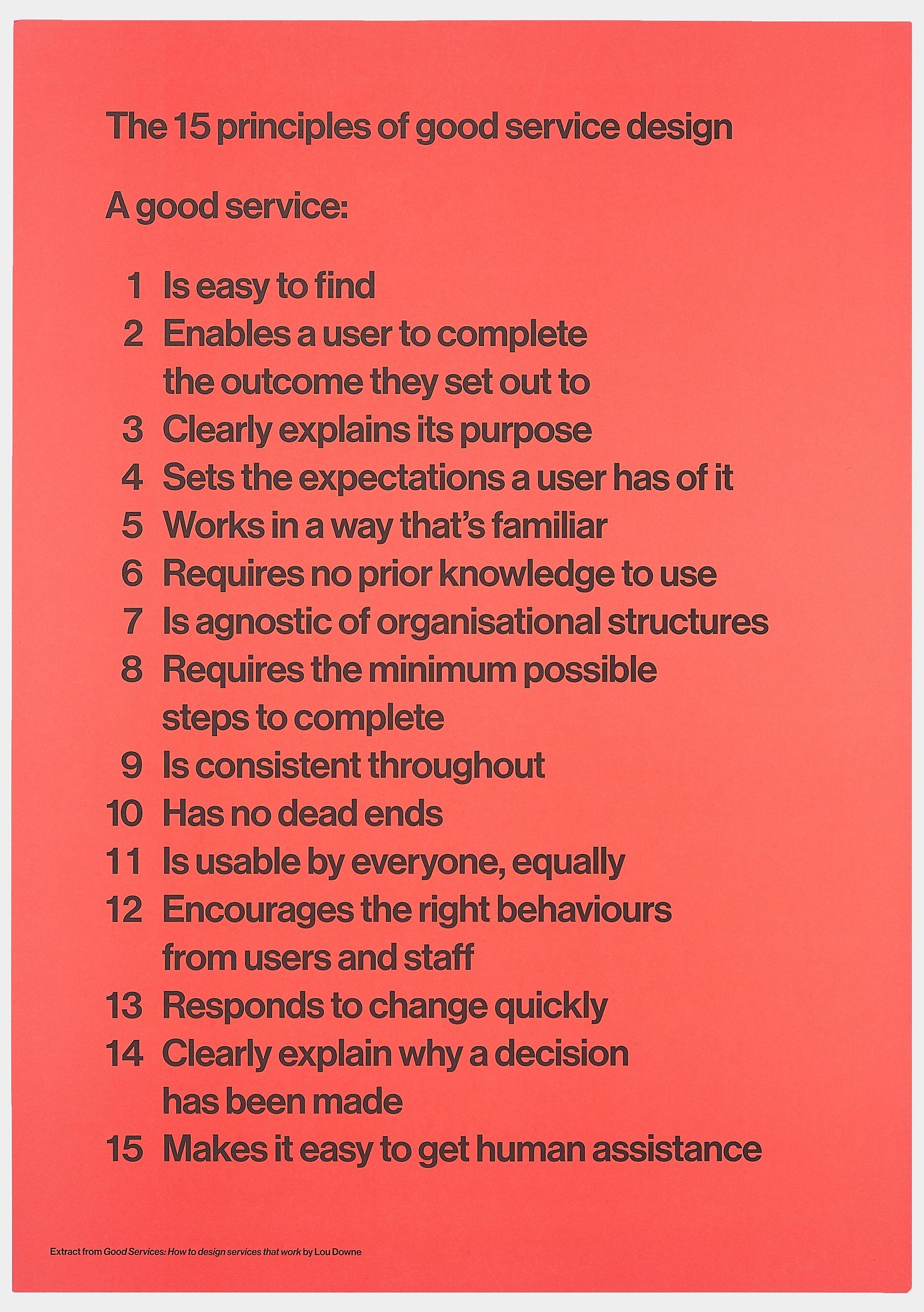15 principles of Good Service Design
14. Clearly explain why a decision has been made
When a decision is made within a service, it should be obvious to a user why this decision has been made and clearly communicated at the point at which it’s made. A user should also be given a route to contest this if they need to
What this means in practice
Your decisions are based on valid evidence that isn't biased
The reason why you made a decision is transparent to the user
Your decisions are clearly communicated to users in a relevant and timely way
There is a clear way for users to dispute the decision you've made
You’ve achieved good when
Your user understands the decisions that have been made about them and why those decisions have been made. They have a way to dispute that decision if they need to
How to do it
Make sure your decisions are valid
Always check your decisions for potential conflicts or dead ends. And for biases that come from the way that information that is collected or used for decision-making
Make sure your decisions are transparent
Make sure that every decision you make about a user is clearly communicated to your user at the time it is made
All too often, users become aware that a past decision has been made about them that affects them now or in the future. If you can, make sure every decision that is about to be made is clearly explained up front, giving your user a chance to course correct and change their circumstances if needed
Make sure your decisions are communicated
Make it very clear to both users and staff what information has been used to make a decision and why this information is relevant for the types of decisions you need to make
Making your decisions transparent also means making sure that any staff who need to explain this to users later will be able to understand why this decision has been made
Some decisions are incredibly complex – like insurance premiums – so think about how to communicate these carefully. You can’t expect your staff or your users to understand the finer points of risk measurement, so explain enough information to help them understand why a decision has been made
Make sure there’s a way to appeal your decisions
Your decision-making process, whether algorithm-based or human won’t always be right, neither will it be able to deal with extreme circumstances that need complex human judgement of context and history
Make sure your user knows your staff have the ability to appeal a decision that they think is wrong. Even if there is little room for changing the final outcome, very little can replace the ability a human brain has to be able to make complex judgements


